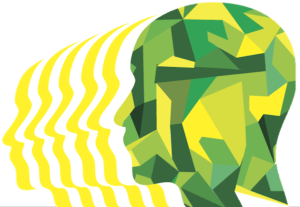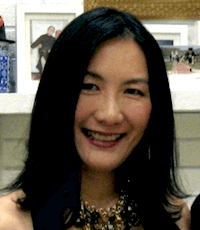 Our thanks to Carol Van Den Hende for this sixth in a series of posts to provide perspective on the business of writing, leveraging a marketing professional’s experience. In this installment, applying “Design Thinking” to your writing. Take it away, Carol!
Our thanks to Carol Van Den Hende for this sixth in a series of posts to provide perspective on the business of writing, leveraging a marketing professional’s experience. In this installment, applying “Design Thinking” to your writing. Take it away, Carol!
Companies have been using “design thinking” to spur innovation for several decades, since Tim Brown, CEO and President of IDEO, wrote about the process in Harvard Business Review in 2008. Design thinking is best applied to ambiguous problems that don’t have known solutions.
Fiction can certainly fit that definition! I posit that applying design thinking to writing can unlock fresh approaches.
Here are the steps of design thinking and how they link to writing:
 1. EMPATHIZE.
1. EMPATHIZE.
Step 1 in design thinking is to immerse deeply into the target consumer’s world. There are many ways to do this. For example, ethnography allows researchers to understand problems from another person’s perspective, by seeing them in their element at home or in-store. Interview these people with open-ended questions, digging deep for the root ‘WHY.’
This can apply to understanding your characters’ motivations. I started my debut novel inspired by wounded veterans. For me, I deepened empathy by reading about injured soldiers’ experiences, meeting them, and interviewing them. I was fortunate that people were generous with their time and candor. These interviews and research really informed my empathy for my main character’s struggle after he was injured.
Once I’d used this empathy to form a clear picture of my hero, I crafted a heroine whose life defining moments created a built-in conflict with the hero. As a child, the heroine witnessed the death of her parents. After the hero is injured, his desire to protect her from re-experiencing trauma creates the story’s central conflict. The ability to write their conflict authentically came from deeply empathizing with each character’s position.

Man looking through a magnifying glass
2. DEFINE.
A key step in design thinking is to define the key question that you’re trying to answer. This requires deeper thought than it sounds. Write the problem from the protagonist’s point of view, based on the deep empathy established through ethnography and other research.
Continuing with the example of my novel, I used my deep empathy for the hero and heroine to define the novel’s key questions:
“What if the guy who’s always been perfect has to accept his imperfections after a life-changing accident? And what if the woman who’s been afraid to face images of trauma has to embrace them in the man she loves, for them to have a chance to be together?”
 3. IDEATE.
3. IDEATE.
In this stage, it’s important to cast wide for ideas before determining the ultimate ones to use. Diverge before converging.
In the world of story, there are many tools to help with ideation, from storyboarding and plotting to the three act structure. Anything that works is fair game. For plotters, ideation can occur at the planning stage for the full book. For pantsers, ideation can take place scene by scene as needed.
In my case, I explored writing my story as a romantic suspense before removing the suspense elements and focusing on contemporary romance. I tried different love interests, and endings in which the heroine was killed before finally landing on a happily ever after.
The fourth step in design thinking is to rapidly prototype. In product ideation, this means mocking up actual products with features and benefits that could solve the defined problem.
In writing, the prototype can leverage an outline, character studies, scene cards or any other tools that result in a manuscript.
 4. TEST AND LEARN.
4. TEST AND LEARN.
The final stage of design thinking is to define ways to test the prototype. For writers, this can comprise eliciting feedback from critique partners, beta readers or other sources.
There are multiple tools and frameworks to help writers. Design Thinking can provide a fresh perspective that can apply to writers’ creative processes. Next time you’re undertaking a fiction project, consider how Design Thinking might unlock your new ideas.
About the Author:
 As a marketing executive for a top 20 consumer goods company, Carol’s led the positioning, branding, strategy, design and product development for billion dollar brands. For nearly two decades, she’s collaborated with best-in-class advertising and promotions agencies.
As a marketing executive for a top 20 consumer goods company, Carol’s led the positioning, branding, strategy, design and product development for billion dollar brands. For nearly two decades, she’s collaborated with best-in-class advertising and promotions agencies.
Recently, Carol has been teaching authors to apply marketing techniques to branding and design. Carol writes contemporary fiction. Her first novel is about resilience in the face of change.
Carol earned an undergraduate degree in Industrial Engineering from Rutgers, and an MBA from Lehigh University. She serves on the Board of Trustees for a special needs school and is an avid member of RWA, NJRW, and Women Who Write. Carol has lived in the U.S. and China with her husband and twins.
